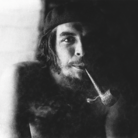Andrea Schiavone. A Venetian Renaissance artist straddling the worlds of Titian, Tintoretto and Parmigianino
From 28 Novembre 2015 to 10 Aprile 2016
Venice
Place: Museo Correr
Address: piazza San Marco
Times: 10am-05pm
Responsibles: Enrico Dal Pozzolo, Lionello Puppi
Ticket price: full € 12, reduced € 10. Free entrance Venetian citizens and residents; children aged from 0 to 5; disabled people with helper; authorized guides and interpreters accompanying groups or individual visitors; for groups of at least 15 people, 1 free entrance (only with prior booking); accompanying teachers of school groups (up to 2 teachers per group); ICOM members; MUVE ordinary partners; Servizio Civile volunteers; MUVE Friend Card holders, holders of “The Cultivist” card (plus three guests)
Telefono per informazioni: +39 041 2405211
E-Mail info: info@fmcvenezia.it
Official site: http://www.correr.visitmuve.it
SCARICA IL COMUNICATO IN PDF

-
 Dal 27 marzo 2025 al 27 luglio 2025
Milano | Pirelli HangarBicocca
Dal 27 marzo 2025 al 27 luglio 2025
Milano | Pirelli HangarBicocca
-
 Dal 27 marzo 2025 al 30 giugno 2025
Bologna | Museo Civico Archeologico
Dal 27 marzo 2025 al 30 giugno 2025
Bologna | Museo Civico Archeologico
-
 Dal 27 marzo 2025 al 20 luglio 2025
Firenze | Villa Bardini
Dal 27 marzo 2025 al 20 luglio 2025
Firenze | Villa Bardini
-
 Dal 25 marzo 2025 al 24 agosto 2025
Brescia | Museo di Santa Giulia
Dal 25 marzo 2025 al 24 agosto 2025
Brescia | Museo di Santa Giulia
-
 Dal 22 marzo 2025 al 20 luglio 2025
Ferrara | Palazzo dei Diamanti
Dal 22 marzo 2025 al 20 luglio 2025
Ferrara | Palazzo dei Diamanti
-
 Dal 22 marzo 2025 al 08 giugno 2025
Venezia | Ca’ Pesaro – Galleria Internazionale d’Arte Moderna
Dal 22 marzo 2025 al 08 giugno 2025
Venezia | Ca’ Pesaro – Galleria Internazionale d’Arte Moderna



